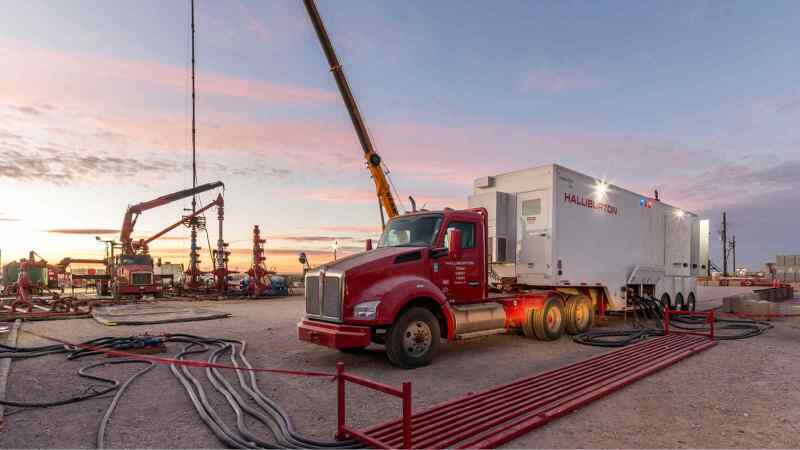Haynesville Shale operator Aethon Energy and Halliburton have inked a multiyear contract to use the oilfield service company’s new all-electric fracturing spread, or an e-fleet. The companies said in a joint announcement that the e-fleet will use Halliburton’s “Zeus” electric pumping unit and a power-generation unit supplied by VoltaGrid.
“All-electric fracturing represents an exciting approach to our overall strategy to reduce emissions in our operations,” Paul Sandler, Aethon’s chief operating officer, said in the announcement. Aethon said it is the largest privately-owned natural gas producer in the Haynesville Shale where production this year rose to nearly 13.2 Bcf/D, according to S&P Global Platts Analytics.
Halliburton announced the first deployment of the Zeus electric pumping unit in August with Chesapeake Energy. This deployment also included the power system developed by the startup VoltaGrid.
The companies said the first pad to use the new all-electric fracturing kit completed more than 140 stages in Pennsylvania’s Marcellus Shale.
Halliburton has said previously that while other electric pumping units claim to operate at or above 5,000 hydraulic horsepower (HHP), its new Zeus pump is the first to sustain rates over 22 bbl/min at 5,000 HHP. The company added that the electric unit delivers 30–40% higher HHP than conventional pressure pumping units, reducing the overall footprint on pads by about a third.
Additionally, Halliburton said that its latest e-fleets include electric-powered blending units, wireline, and other equipment.
To power its new e-fleets, Halliburton is working with VoltaGrid, which was founded in 2020 and in February of this year secured an equity commitment topping $72 million from several investment groups.
VoltaGrid’s product line includes natural-gas-fed generators, backup battery storage systems, and switchgear to optimize fleet energy usage and to connect with grid power. Each of these systems is trailer-mounted and can be configured to provide between 1 to 38 MW of electricity. Another feature VoltaGrid is touting includes real-time emissions tracking.
In the first deployment with Chesapeake, the companies reported a 32% reduction from baseline emissions thanks to 25 MW of power generated using Chesapeake’s local field gas.
The chief driver behind the rise of e-fleets is the growing focus among US operators and oilfield service companies on environmental, social, and corporate governance (ESG) compliance scores. However, it remains unclear how quickly e-fleets can replace conventional diesel-powered and dual-fuel fleets.
In this JPT article published earlier in October, a Halliburton executive cautioned that uptake is likely to be “steady to slightly growing” as the entire US shale sector demonstrates capital discipline. In other words, Halliburton and others are not building e-fleets, which are more expensive than conventional pumping technology, on spec.
As explained by Michael Segura, vice president of Halliburton Production Enhancement: “For all of the interest, we still exist in a marketplace where, in aggregate, there are more frac spreads than the world needs. To build new equipment into a market that is already supplied requires good commercial arrangements between suppliers and clients.”


